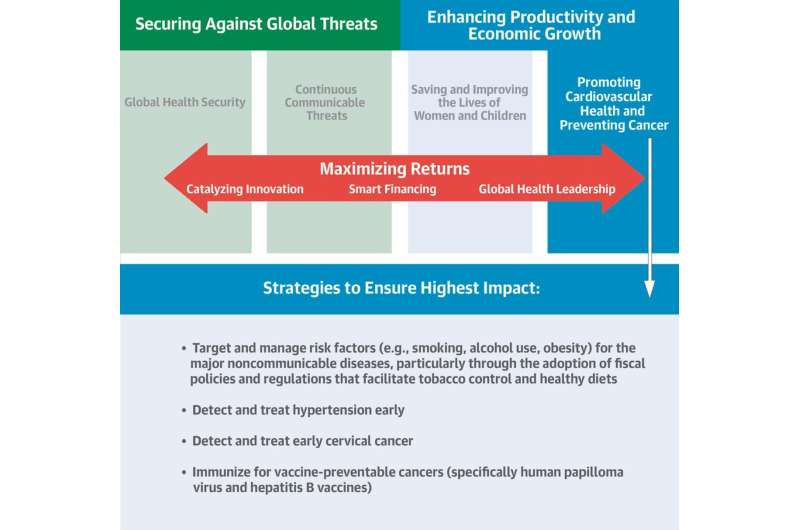Global health committee issues report on heart disease burden

The United States must prioritize its health resources toward detecting and treating noncommunicable diseases, such as cardiovascular disease, while maintaining and expanding prevention and eradication of infectious diseases on a global scale, according to a report modified from U.S. global health recommendations from the National Academies of Sciences, Engineering and Medicine (previously the Institute of Medicine) published today in the Journal of the American College of Cardiology.
Appropriate global health strategies have the potential to not only saves lives, but also contribute to worldwide economic prosperity and growth. The United States has been a leader in promoting global health through focused programs on AIDS, malaria, tuberculosis and other infectious diseases, and as a result of these programs and sanitation and prevention improvements, the disease burden globally has shifted from infectious diseases to noncommunicable diseases.
In this report, the Committee on Global Health and the Future of the United States, was tasked with identifying current global health priorities and making recommendations to the U.S. government and other stakeholders to increase responsiveness, coordination and efficiency in addressing global health needs. They developed recommendations that, according to the paper, "would deliver a strong global health strategy and maintain the role of the United States as a leader in global health."
The committee first outlined four priority areas for action: 1) achieving global security, 2) maintaining a sustained response to the continuous threats of communicable diseases, 3) saving and improving the lives of women and children, and 4) promoting cardiovascular health and preventing cancer.
"These NASEM recommendations and this manuscript are among the most important efforts of my career, because if they are adopted by the U.S. government, they have the potential to enact true change for global health," said corresponding author Valentin Fuster, MD, PhD, from Mt. Sinai Medical Center in New York. "The next step for the committee is to present these recommendations to the U.S. Senate and to President Donald J. Trump."
Three cross-cutting areas were further developed to maximize the returns on investment, achieve better health outcomes and use funding more effectively: 1) catalyze innovation through accelerated development of medical products and integrated digital health infrastructure, 2) employ more nimble and flexible financing mechanisms to leverage new partners and funders in global health, and 3) maintain U.S. status and influence as a world leader in global health while adhering to evidence-based science and economics, measurement and accountability.
Specifically, in this report, the committee focuses on the detection and management of cardiovascular disease and offers a roadmap for achieving better outcomes in preventing and treating heart disease, including through screening, accelerated drug development, digital health and smart financing strategies.
















